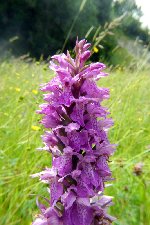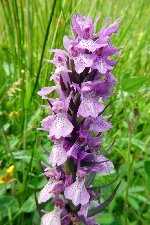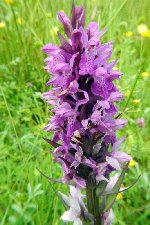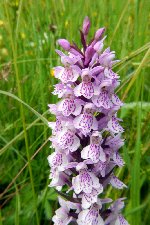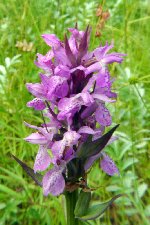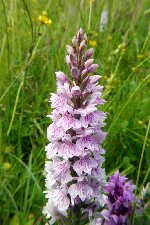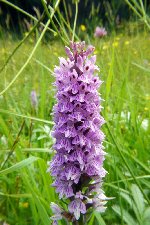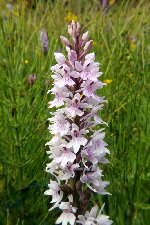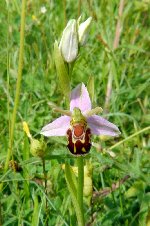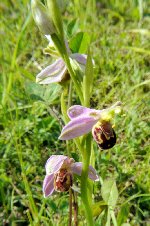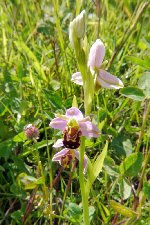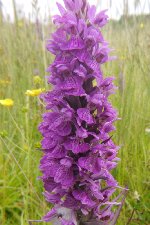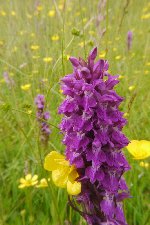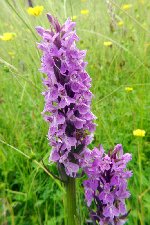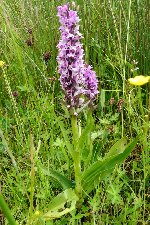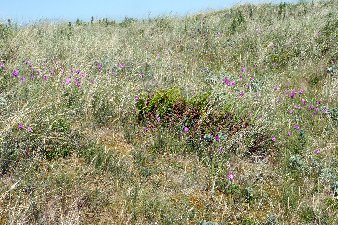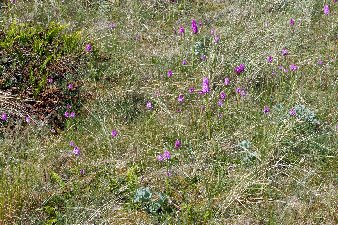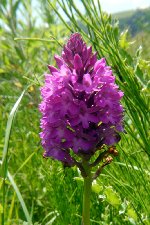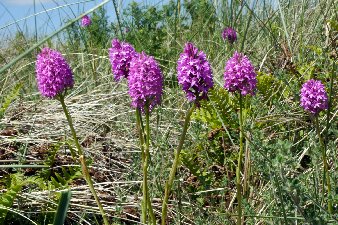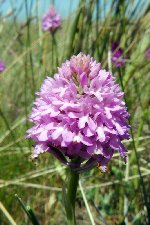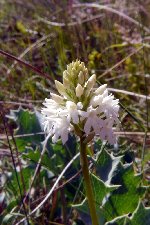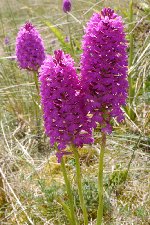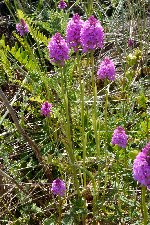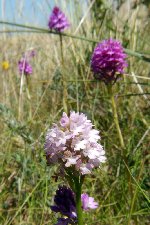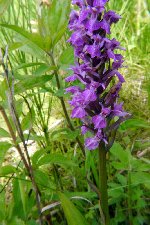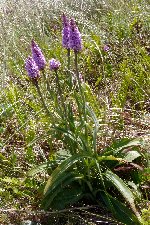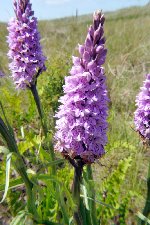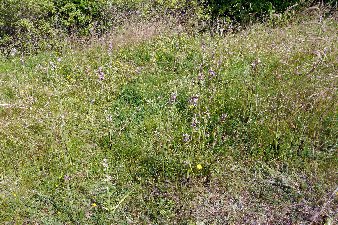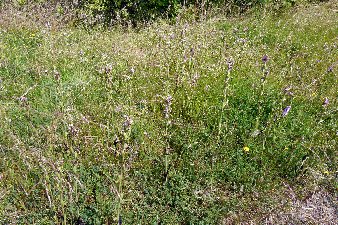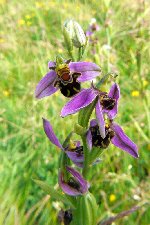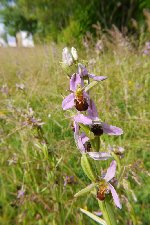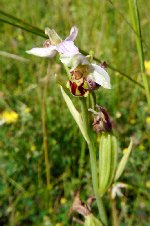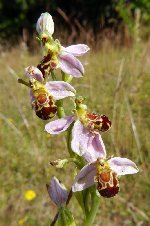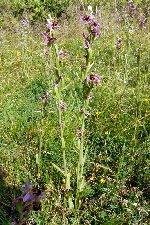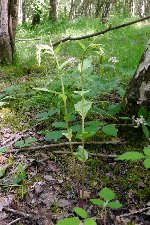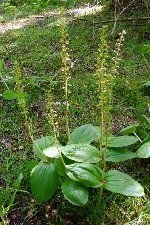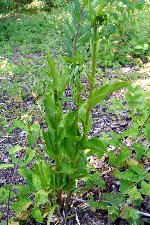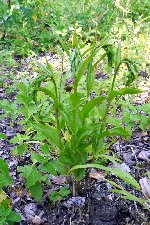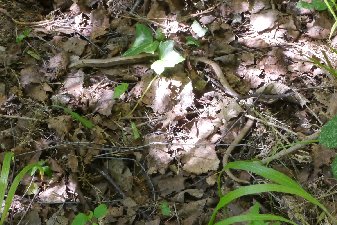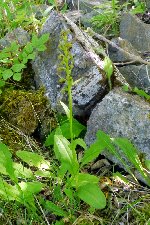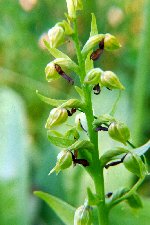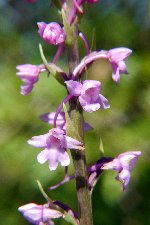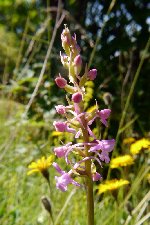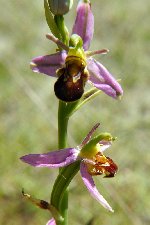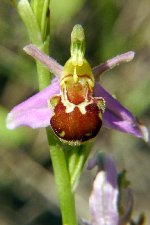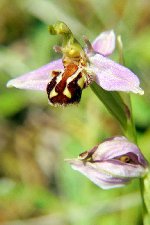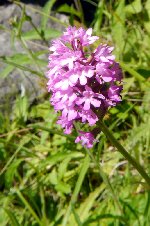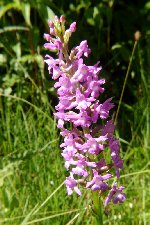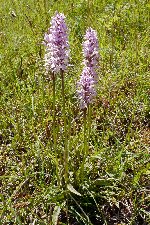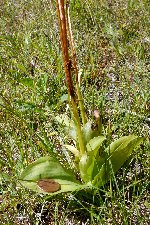|
|
|||||||||||||||||
|
|
|||||||||||||||||
 |
|
Wrens Nest Hill 18th June 2018 (SO 93575 92195) A Black Country day out. Unfortunately the first stop, Cutwells near Sedgely, was orchid-less. The Bee Orchids can be found around the Quarry site, and at first hard to find. But then there is a cluster of 12 or so on a small bank. Clearly the progeny of a single plant there. Saltwells Park 18th June 2018 (SO 93419 88022) I think the Southern Marsh Orchid population has increased here, compared to three years ago. Many have gone over, but still a great display without any contaminant Dactylorhiza species, so hopefuly a true breeding population will not go the smae way as Wren's Nest. Morrover, these are protected from horse grazing during the growing period. Gronant Dunes 22nd June 2018 (SJ 08453 84351) It is approaching 40 years since I came here last. I did note that some Pyramidal Orchids could be seen in the dunes. Things have changed. A few pyramidals can be seen dotted here and there, while a lone Southern March Orchid lurks near one of the Natterjack Toad ponds. Tiny toadlets can be seen creeping through the undergrowth. A single Common Spotted Orchid clump catches my eye, as the leaves are rather snake-like, and the flowers have a distinct lavender coloured background. As you can expect, this does not show itself on the photos! Then, in the middle stretch of dunes we see thousands of Pyramidal Orchids. They are in all shades of pink, and all shapes and sizes. An incredible display. These was even a solitary pure white Var. albida. If we saw one of these out of 20,000 plants, and if this is a simple recessive gene, then the albida gene incidence is 0.06%.
Llay Indusrial Estate 23rd June 2018 (SJ 32295 56601) Last year I spotted a bit of waste ground on Llay Industrial Estate that may have been a place to look for orchids. There wasn't much, apart from Common Spotted Orchids there, and I had a bit of an issue that month with lost photo files. While most were recovered it seems the Llay photos were not, and consequently I did no write up for these pages. This year however, the power of social media showed itself when a post mentioning Bee Orchids on an unmown verge in the same estate was posted. It wasn't hard to track down where it was, but the post did not prepare me for the sight of some 500 plants on a 60m x 3m strip of grass. Many were knee height. Truly, this is the most concentrated colony of Bee Orchids I have seen. They are absolutely thriving here. While many have the lower flowers finished and seed pods starting to swell, the number of flowers per plant is so high that the top four or five are still at their peak with pollinia still attached to the column. Definitely a site to visit again. There was also a Pyramidal Orchid or two around. Rather ironically, while the Bee Orchids on Wrexham Industrial Estate grow on a verge now adjacent to Berwyn Prison, these are almost opposite the site of the new Wrexham Police HQ! Do Bee Orchids have a sense of justice? There are old reports of them growing outside police HQ in Colwyn Bay as well. Alyn Waters and Marford Quarry 24th June 2018 (SJ329551), (SJ356560) A quick trip to two local sites mainly to see how the Epipactis are getting on. At Alyn Waters the Bee Orchids are virtually finished, and the rhodochila-like Common Spotted Orchid is not to be seen. The lack of rain may be having an effect, as the Common Twayblades in this area are all flopped over. Elsewhere, under the trees, they seem to be faring better with some nice groups with waist high flower spikes. The Dune Helleborines and Green-flowered Helleborines are doing well but both need 10 days to a couple of weeks before they start to flower. At Marford Quarry I am most interested in the Dune Helleborines. On the way there I have a look for the late-flowering Bee Orchid seen in July 2017, but no sign of it. Pyramidal Orchids and Common Spotted are doing fine. It took me a while to locate the nice tall group of three spike of Dune Helleborines from 2017. Some soil moving had been done in order to provide habitats for the local Hymenoptera specialties, and at first I thought the DHs had been dug up. But they were found, closer to the trees than I remembered. This may have been because last year where they grew looked very open, but this year the birch that had been cut back to the ground is pushing up lots of shoots. The group of three is now four spikes, and a larger group is quite close. The latter seems to have had flower spikes removed. Eryrys 25th June 2018 (SJ 20309 56903) Another local trip to see the effects of the hot dry weather reveals that the Frog Orchids at Eryrys have been affected. We only see nine of them, all small, and all with the lip shrivelled and blackened. All the larger ones have died or not come up this year. The largest, by the track edge, went brown early last year. By contrast the Chalk Fragrant Orchids are just coming into flower, and show that the lip is the last part to unfurl. I have a good look for any hybrids between these and the Common Spotteds, but find nothing. However! Do I know what I am looking for? A post on social media I see on my return shows the hybrid to most resemble the CSOs, white pale colours and spotted tri-lobed lip. Next year I shall look closer! Afterwards we had a walk through the woods at Rhyd-y-Gaseg, near Ruthin, but saw no evidence of orchids there. Dolgoch Quarry 29th June 2018 (SJ 27738 24780) We were here three years ago, but about five weeks later in the year, and it was obvious that all the orchids were well over. We didn't actually bother to go to the quarry proper. This time we make it there, but it doesn't seem quite as it was when I had been there decades ago looking for fossils. What has happened is that there is a spur of rock dividing the quarry in half with a tunnel through it. That tunnel is move closed off by trees and bushes and we are restricted to the one side. No matter, I doubt we would see anything different on the other side. There are several other orchid sites within a mile or two of this quarry, but I am making a concious effort not to keep treading the same old ground, photographing the same old orchids each year. As I didn't think returning to these would reveal anything new at all I managed to resist the temptation! Postscript: I am informed by one our European enthusiasts that the middle Bee Orchid above is Ophrys apifera Var. aurita. It does look a bit atypical, which is why I chose this to use here, but this variety does not feature in UK literature, and can be found as far away as the Lebanon. But I will bow to others' experience!
|
|
|
||||||||||||||
